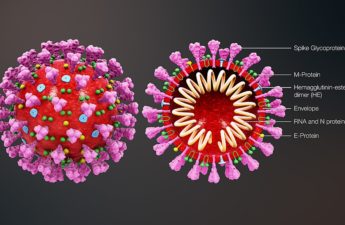“When there’s not enough housing for all, rents and prices skyrocket beyond what many can afford,” Inslee said. “An until we fix our housing crisis, thousands of people will remain homeless.”
Experts Debate the Risks of Made-to-Order DNA
By one expert’s estimate, perhaps 30,000 scientists worldwide have the skills to build a strain of pandemic influenza, provided they can find someone to synthesize the DNA for them. The consequences of unleashing such a pathogen could be catastrophic.
Damar Hamlin’s cardiac arrest shows need for CPR training and emergency defibrillators in public spaces
Adam Pyle, University of Toronto Football — a sport that involves violent collisions — came under shocking scrutiny on Jan. 2 when Buffalo Bills player Damar Hamlin collapsed from a cardiac event immediately following an on-field collision. Most fans already…
China’s COVID situation is dire – but it shouldn’t pose a big risk to other countries
In contrast to China at the outset of this wave, most countries by now have high immunity and protection against severe disease and death from COVID. The European Centre for Disease Prevention and Control has noted that China’s surge “is not expected to impact the COVID-19 epidemiological situation” in Europe.
What caused Damar Hamlin’s heart to stop?
Damar Hamlin’s cardiac arrest during ‘Monday Night Football’ could be commotio cordis or a more common condition – a heart doctor answers 4 questions
Alcohol use is widely accepted, but even moderate consumption is associated with many harmful effects
Research increasingly shows that the dangers of alcohol have been downplayed and its benefits exaggerated. In fact, having even one drink a day can have a negative effect on your health.
Most long COVID cases had mild initial infections, UW study finds
Study found that a staggering 90% of people living with long COVID initially experienced only mild illness with COVID-19. After developing long COVID, however, the typical person experienced symptoms including fatigue, shortness of breath and cognitive problems such as brain fog – or a combination of these – that affected daily functioning. These symptoms had an impact on health as severe as the long-term effects of traumatic brain injury. Our study also found that women have twice the risk of men and four times the risk of children for developing long COVID.
Spot reduction: why exercise probably can’t help you target fatty areas of the body
The mechanics of weight loss are quite straightforward and are rooted in the laws of thermodynamics. Basically this means that in order to lose weight, you must expend more calories than you consume. But where you actually lose this weight isn’t quite so straightforward. This is because where our bodies store fat is governed by our hormones.
What happens to your body on a long-haul flight?
You can become dehydrated. It can can play havoc with your ears, sinuses, gut and sleep. You could develop blood clots. Then there’s jet lag, radiation, COVID. Have a nice flight!
COVID and your gut: how a healthy microbiome can reduce the severity of infection – and vice versa
With COVID, it appears that the make-up of the gut microbiome can influence the course of disease. Research has shown an association between the microbiome profile and levels of inflammatory markers in patients with COVID, where patients with a poorer combination of gut bacteria show signs of too much inflammation. This suggests the microbiome influences the severity of a COVID infection via effects on the immune response.
COVID in 2023 and beyond – why virus trends are more difficult to predict three years on
So how will the pandemic be felt in 2023? This question is in some ways impossible to answer, given a number of unknowns. In early 2020 the scientific community was focused on determining key parameters that could be used to make projections as to the severity and extent of the spread of the virus. Now, the complex interplay of COVID variants, vaccination and natural immunity makes that process far more difficult and less predictable.
It’s OK to aim lower with your new year’s exercise resolutions
Research suggests even one muscle contraction a day, for five days a week, can improve muscle strength if you keep it up for a month.
Public Health – Seattle & King County report assesses its COVID response
King County achieved the lowest death rate due to COVID-19 of the twenty largest metropolitan areas of the country (as of January 2022).
Future Surge in Diabetes Could Dramatically Impact People Under 20 in U.S.
This expected upward trend may lead to as many as 220,000 young people having type 2 diabetes in 2060 —a nearly 700% increaseand the number of young people with type 1 diabetes could increase by as much as 65% in the next 40 years. Even if the rate of new diabetes diagnoses among young people remains the same over the decades, type 2 diabetes diagnoses could increase nearly 70% and type 1 diabetes diagnoses could increase 3% by 2060.
That annoying ringing, buzzing and hissing in the ear – a hearing specialist offers tips to turn down the tinnitus
Roughly 20 million of those have burdensome, chronic tinnitus, and another 2 million struggle with extreme and debilitating tinnitus. The sound varies from patient to patient: buzzing, blowing, hissing, ringing, roaring, rumbling, whooshing or a combination thereof. But whatever the sound, the condition is called tinnitus. And one thing tinnitus patients have in common is that the sound is not an external one. Instead, the noise is literally inside their head.












